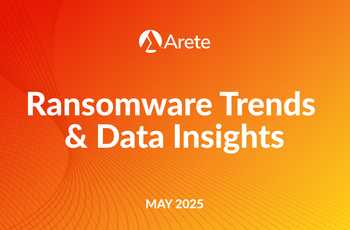
By Kevin Baker
In many ways, cybersecurity insurance is not so different from car or home insurance. In short, it’s a way to transfer risk. If a cyber incident occurs, insurance can help organizations gain a level of mitigating control and recoup costs, whether they come from direct damages, lawsuits, fines, or breach notification expenses.
Although cybersecurity insurance has been around a while, the industry has had to evolve with the threat landscape — and the advent of ransomware changed everything.
In the early 2000s, cyber insurance policies required little more than a simple questionnaire for underwriting and typically only offered coverage in the event of a breach of customer or other sensitive data. If a company lost someone’s personal data and was required to notify them, the policy would cover related expenses. While notifications have been known to get pricey, sometimes costing hundreds of thousands of dollars, the expense is nothing when compared to that of today’s ransomware threat.
Cybercriminals take the path of least resistance
Today, cybercriminals don’t want credit card numbers. They don’t even really want companies’ data. In fact, one day, they began to think, “What if I don’t move data? What if I leave it right where it is, but encrypt it and demand a ransom?”
-
- It’s simpler. Cybercriminals know that companies need their data to survive — however, data theft is a complex process that requires sophisticated skills. Not only do the bad guys have to know how to break in and find the right data, but they also need to know how to remove it. It’s far easier to hold sensitive data for ransom than to try to exfiltrate and monetize it. And now with ransomware as a service (RaaS), anyone can buy ransomware on the web — no sophisticated skills required.
- Easy prey. What’s also made ransomware so disruptive is its impact on smaller companies. Often, they are easier to breach, can’t restore their systems, and thus, have no choice but to pay ransoms.
- Reduced risk. With the dawn of digital currency, the bad guys no longer had to meet at a graveyard with a hostage in a car trunk in the hopes of pulling off a successful “exchange.” By removing physical boundaries, enabling anonymity, simplifying the payment process, cryptocurrency has helped ransomware become the US$6 trillion business it is today. Now, all the bad guys have to say is, “Pay up or else.” Or else, they’ll continue to deny you access to your data. Or else they’ll publish it on the Dark Web.
Is cyber insurance making companies more secure?
Gone are the days of answering five questions on a cybersecurity insurance application. In fact, there are major carriers that won’t even provide a quote unless a business can verify it uses multifactor authentication (MFA) for all remote access, has offline backups, and has a cybersecurity program. These are now must-haves.
This greater scrutiny surrounding the application process is forcing companies of all sizes to build formalized security programs that can identify and address risks. For instance, what’s the likelihood of an employee clicking on an email or link that enables malware to run across the environment and encrypt everything, including backups?
While there’s no way to eliminate all risks, there are ways to make it harder for the bad guys to succeed. In addition to using MFA for all remote access and administrative tasks and having offline copies of backups that are disconnected from the domain, it’s important to:
-
- Have — and practice — both incident response and business continuity plans in place.
- Implement a behavior-based endpoint detection and response (EDR) solution for serious security monitoring that can stop ransomware.
- Educate employees. This means having more than a quarterly newsletter on security and rather, getting into the guts of the company culture and tapping into the quality-conscious mindset to ensure that security becomes another aspect of product quality. Everyone needs to understand that if a product isn’t secure, it isn’t a quality product.
In other words, the more you can do to prove you’re a good driver, the more likely an insurance company will be to grant you a policy.
What is the future of cyber insurance?
Ransomware was the first systemic risk that was cross border and cross sector. It shook up the cyber insurance market because companies couldn’t hedge their bet in one area of risk around the world in one sector because everybody was getting hit. Today, insurance companies have been able to level set and now play a critical role not only in helping to transfer some of the risks that companies have, but also in helping to identify best practices that, when implemented by the companies, will ultimately reduce risk.


